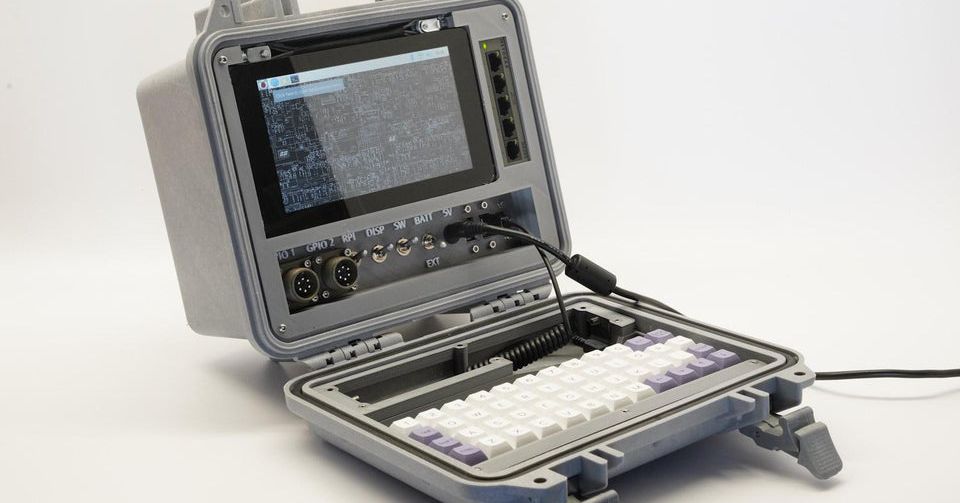Sometimes, certain gadgets speak to you on an intuitive level. They bypass that bit of your brain that demands functionality or value, and make their pitch on pure aesthetics.
This custom Raspberry Pi cyberdeck is just such a device for me. With its rugged waterproof case, retro components switches, and compact ortholinear keyboard, it looks like a computer built for the end of the world — and I love it.
It’s called the Raspberry Pi Recovery Kit and is the work of Jay Doscher, a maker who shares his projects over at Back7.co. Speaking to The Verge via email, Doscher explains that the apocalyptic theme of the Recovery Kit is as much about aesthetics as functionality.
“The ‘end of world’ scenario is a bit tongue in cheek since the focus would be on food, water, and shelter,” says Doscher. “But someone could certainly use and modify [this] for their specific scenario.”
:no_upscale()/cdn.vox-cdn.com/uploads/chorus_asset/file/19413081/JAY01429.jpg)
Doscher built an earlier version of the Recovery Kit a few years back and wanted to improve on the older design. The new version is constructed inside a waterproof Pelican camera case, with custom 3D-printed parts used to hold in place its various components. These include a seven-inch touchscreen display, internal battery, 5z6p Plaid keyboard, and Netgear 5-port ethernet network switch, with the whole thing powered by a Raspberry Pi 4.
There’s even a copper-foil lined cardboard case for the unit — perfect for the paranoid who are worried about EM pulses scrambling their electronics. You can read more details on the build, including additional pictures and a full component list, here.
As well as its apocalyptic theme, the Recovery Kit also belongs to a sub-genre of homebrew devices known “cyberdecks” — makes that are inspired by and named after the computers used in William Gibson’s 1984 sci-fi classic Neuromancer.
In Neuromancer, cyberdecks are powerful and compact machines that let Gibson’s console cowboys access cyberspace on the go. Now, of course, everyone has a smartphone in their pocket for this, but the cyberdeck still speaks to a certain dream of computing: independent and hacked together. Modern versions are usually made with small screens and retro keyboards. You can see a bunch over at Hackaday and the r/Cyberdeck subreddit.
Doscher says his apocalyptic cyberdeck isn’t all about looks, though, and the details of its construction do serve a purpose. Separate switches for each of the build’s components would let you save power in an emergency, for example, while the networking gear would allow the Recovery Kit to function as a portable network core if infrastructure is hit.
“If you’re in an environment where power is limited and you need to set up a standalone network, the Raspberry Pi could run DNS, DHCP, and a web server very similar to wall-powered router,” says Doscher.
Of course, just knowing how to build something like this would probably put you in good stead for an apocalyptic scenario. If you’re already capable of making computers from scavenged parts you’re one step ahead of most of the world. Time to get building.
